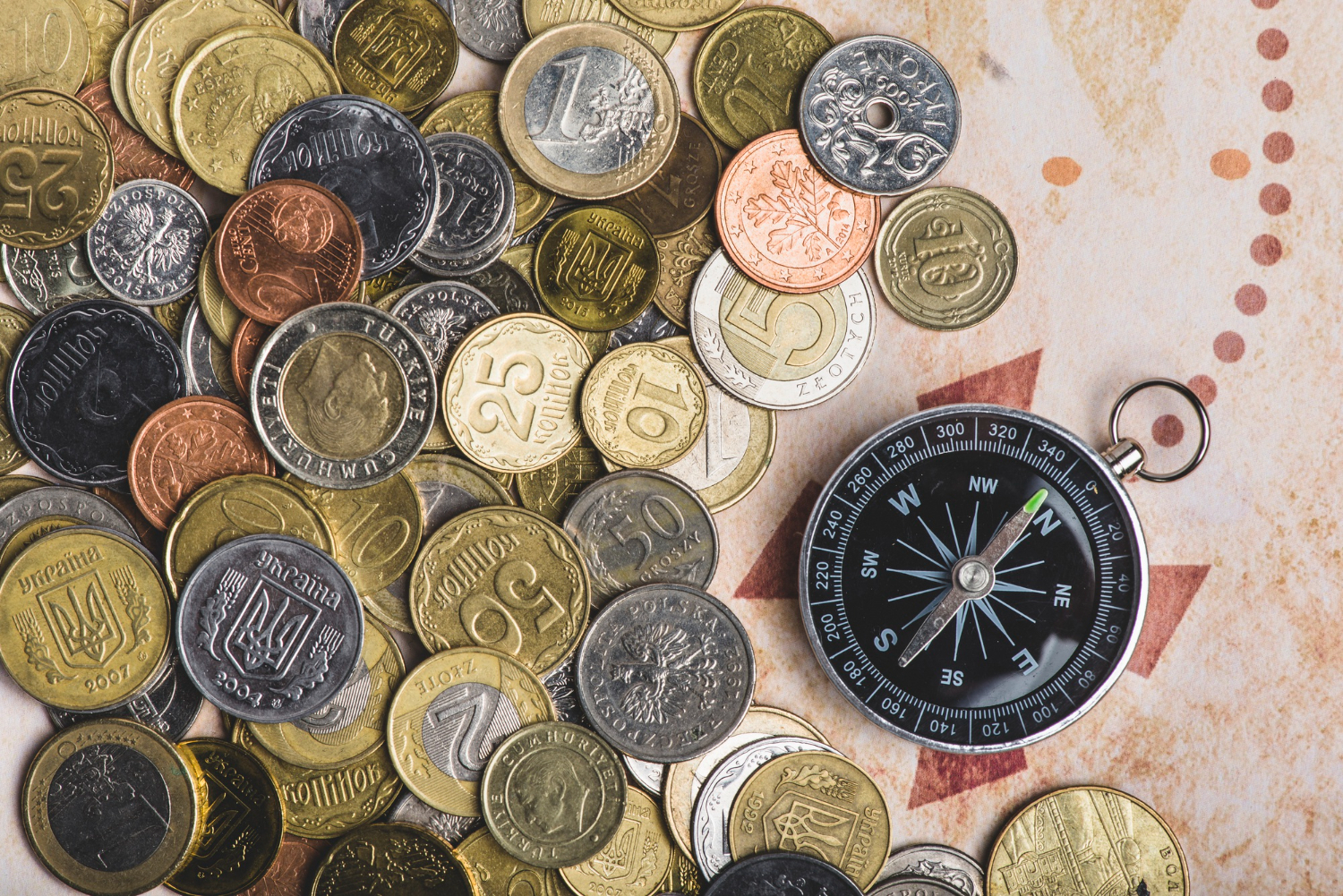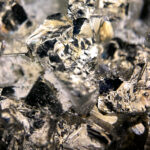Tungsten is a metal with a unique blend of properties that make it a crucial resource in various industries. Its exceptional hardness, high melting point, and excellent electrical conductivity have made it indispensable in applications ranging from aerospace to electronics. As of September 2023, the price of tungsten, often cited as the Tungsten APT Price CIF Rotterdam, stands at a range of US$305-$325 per metric tonne unit (mtu). In this article, we delve into the factors that determine the worth of tungsten, the industries it influences, and its economic significance.

Tungsten’s Historical Significance
Tungsten, denoted on the periodic table by the symbol W, is derived from the Swedish “tung sten,” meaning heavy stone. Its discovery dates back to the 18th century when Swedish chemist Carl Wilhelm Scheele and his countryman Torbern Bergman isolated tungsten oxide from a mineral called scheelite. Tungsten metal was later isolated by the brothers Juan José and Fausto Elhuyar in 1783. The metal’s name reflects its heavy density and significance in the world of industry.
Properties that Define Tungsten
- Extraordinary Hardness: Tungsten has an exceptional hardness, which surpasses that of most other metals. Its hardness is due to its strong atomic bonds, which makes it ideal for applications where wear resistance is crucial. Tungsten carbide, a compound of tungsten and carbon, is renowned for its exceptional hardness and finds uses in cutting tools, mining equipment, and armor-piercing ammunition.
- High Melting Point: Tungsten boasts the highest melting point of all elements, at approximately 3,422 degrees Celsius. This property, coupled with its low vapor pressure at high temperatures, makes it a preferred choice for high-temperature applications such as lightbulb filaments, rocket nozzles, and various types of furnaces.
- Excellent Electrical Conductivity: Tungsten is a notable conductor of electricity and is often used in electrical applications. It is used in the manufacture of electrical contacts, filaments in incandescent light bulbs, and electrical discharge machining electrodes.
- Outstanding Heat Resistance: Tungsten’s remarkable heat resistance allows it to withstand extreme temperatures without deformation. This property is critical in aerospace and military applications, as well as in the production of high-performance alloys and coatings.
The Tungsten Market
The tungsten market is influenced by various factors that determine its worth. Understanding these factors is essential to comprehend the fluctuations in tungsten prices and its economic significance.
- Supply and Demand: The primary factor that influences tungsten’s worth is the interplay between its supply and demand. The production of tungsten is concentrated in a few key countries, including China, which is the world’s largest producer. Tungsten demand arises from a variety of industries, with the largest consumers being the automotive, electronics, and construction sectors. Fluctuations in supply, due to geopolitical or geological factors, can significantly impact the market.
- Geopolitical Factors: Tungsten reserves are unevenly distributed worldwide. This can lead to geopolitical tensions as countries seek to secure their access to this critical resource. For example, China’s dominance in tungsten production has led to concerns about supply security for other countries. Trade policies and geopolitical events can, therefore, have a profound impact on tungsten prices.
- End-Use Industries: The worth of tungsten is intrinsically linked to the industries that rely on its properties. The aerospace and defense sectors depend on tungsten for its high strength and heat resistance in manufacturing parts for aircraft and missiles. The electronics industry utilizes tungsten in semiconductor devices and electrical contacts, while the automotive sector incorporates tungsten in the manufacture of electrical components and catalytic converters.
- Technological Advancements: As technology advances, the demand for tungsten in cutting-edge applications increases. For instance, the development of electric vehicles (EVs) and renewable energy technologies has driven the demand for tungsten in electrical contacts and high-performance materials used in batteries and generators.
- Recycling: Recycling plays a role in the tungsten market. The recycling of tungsten scrap can alleviate some of the pressure on primary production and contribute to the metal’s sustainability. Environmental concerns and regulations are also influencing recycling efforts.
- Currency Exchange Rates: Tungsten is a globally traded commodity, and its price can be affected by fluctuations in currency exchange rates. Currency movements can influence the cost of production and, consequently, the market price.
Tungsten Pricing in 2023
As of September 2023, the Tungsten APT Price CIF Rotterdam is valued at a range of US$305-$325 per mtu. This pricing is reflective of the current dynamics in the tungsten market. Tungsten prices have historically been subject to volatility, influenced by various factors mentioned earlier. While these prices have shown some stability in recent years, understanding the price range is critical for both consumers and producers in the industry.
Factors Affecting Tungsten Prices
- China’s Dominance: China has consistently been the largest producer of tungsten, accounting for a significant portion of global supply. Any shifts in Chinese tungsten production, such as changes in environmental regulations or export policies, can have a substantial impact on global prices.
- Geopolitical Events: Tensions between major tungsten-producing countries can affect the market. Disruptions in supply chains due to trade disputes or geopolitical conflicts can lead to price fluctuations.
- End-User Demand: The demand for tungsten in key industries directly impacts its price. As industries like aerospace, electronics, and automotive grow or contract, the market adjusts accordingly.
- Investor Sentiment: Like many commodities, tungsten prices can be influenced by investor sentiment and speculation. Changes in investment patterns can result in sudden price fluctuations.
- Mining and Production Costs: The cost of extracting and processing tungsten-bearing ores influences its price. Factors like energy costs, labor, and environmental regulations can impact production costs.
Tungsten’s Impact on Key Industries
- Aerospace and Defense: Tungsten’s exceptional properties, such as high strength and heat resistance, make it indispensable in the aerospace and defense sectors. It is used in the production of aircraft components, rocket nozzles, and armor-piercing ammunition. Any fluctuations in tungsten prices can affect the cost and competitiveness of these industries.
- Electronics: Tungsten’s electrical conductivity is crucial for the electronics industry. It is used in semiconductors and electrical contacts, ensuring the reliable functioning of various electronic devices. The stability of tungsten prices can significantly impact the manufacturing costs of electronics.
- Automotive: Tungsten is utilized in the automotive industry for electrical components and catalytic converters. As the automotive sector evolves with the development of electric vehicles, the demand for tungsten in this industry may increase, impacting the metal’s value.
- Mining and Construction: Tungsten is used in the mining industry for drilling equipment and cutting tools. In the construction sector, it is employed in the production of high-strength steel and concrete. Tungsten price fluctuations can influence the construction costs of infrastructure projects.
- Energy: The energy sector relies on tungsten for the production of high-performance materials used in generators, batteries, and renewable energy technologies. The transition to cleaner and more efficient energy sources may lead to increased demand for tungsten.
Tungsten Recycling and Sustainability
The sustainability of tungsten resources is an increasingly important consideration. Tungsten is not a renewable resource, and its mining can have environmental impacts. However, recycling is an avenue to reduce the reliance on primary production and mitigate some of these concerns.
Recycling tungsten is a viable option due to its high intrinsic value and the fact that tungsten scrap is generated from various sources, including discarded tools, electrical components, and aerospace parts. Recycling reduces the need for new tungsten mining and can be economically advantageous in terms of resource conservation.
Efforts to promote the recycling of tungsten include the development of recycling technologies and awareness campaigns among industries that generate tungsten-containing waste. In addition, regulatory measures may incentivize recycling practices.
Tungsten’s Role in Emerging Technologies
Tungsten’s unique properties continue to be harnessed in emerging technologies. As the world undergoes rapid technological advancements, the demand for tungsten in these areas is expected to increase, influencing its value.
- Electric Vehicles (EVs): Tungsten is used in electrical contacts and high-performance materials in EVs. The growth of the electric vehicle market presents a substantial opportunity for increased tungsten consumption.
- Renewable Energy: Tungsten is used in generators and high-temperature materials for solar panels. With the expanding renewable energy sector, the demand for tungsten in these applications is expected to rise.
- Semiconductors: Tungsten’s role in semiconductors makes it vital in the tech industry. As semiconductor technology advances, so does the need for tungsten.
- Additive Manufacturing: Tungsten can be utilized in 3D printing technologies due to its high melting point. This is a promising avenue for its application in advanced manufacturing processes.
Conclusion
Tungsten’s value transcends its price in the market. Its unique combination of properties has made it an indispensable resource in critical industries, from aerospace to electronics. The worth of tungsten is influenced by a complex interplay of supply and demand, geopolitical events, end-use industries, and technological advancements. Tungsten’s pricing in 2023, with a range of US$305-$325 per mtu, reflects the current state of the market, but it is subject to fluctuations driven by these factors.
Moreover, tungsten’s impact extends to emerging technologies and the quest for sustainability. As new industries and technologies evolve, the demand for tungsten is set to grow, further emphasizing its economic significance. Additionally, recycling efforts are promoting the responsible use of this resource.
In conclusion, the value of tungsten is not merely confined to its market price but encompasses its essential role in shaping our world, driving technological progress, and underpinning key industries. Understanding and managing this critical resource is vital for a sustainable and prosperous future.





